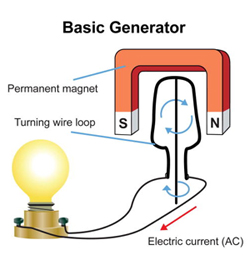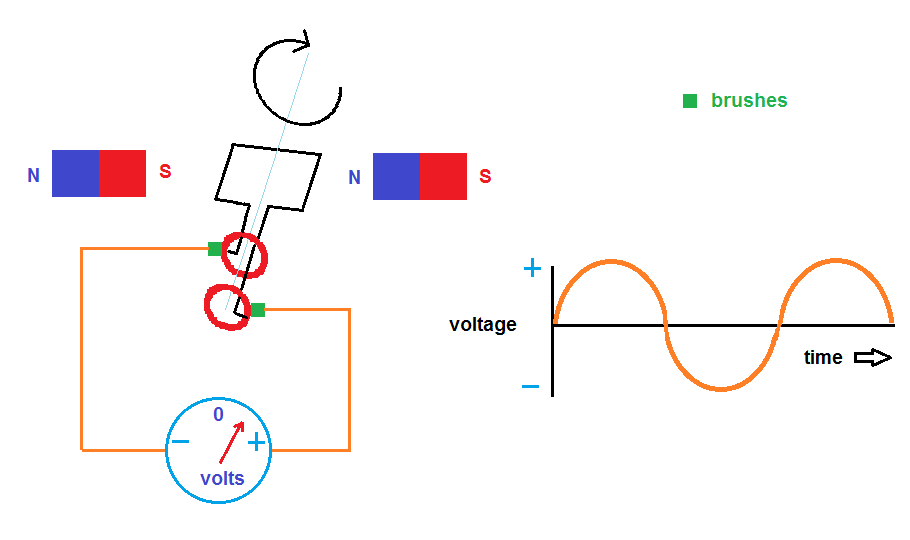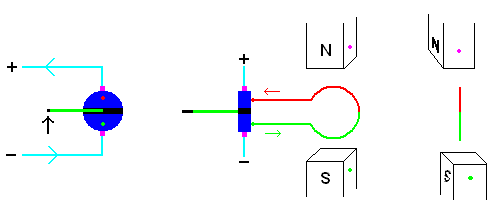
The systems below look strikingly similar to motors introduced in the last section. They should! An electrical generator is an electric motor turned backwards. This is similar to the discussion of the water wheel and the pump. As you recall, in the case of a water wheel, the wheel receives energy from the falling water and therefore starts turning. The pump also has a wheel but in this case, the spinning wheel delivers energy to the fluids ... creating pressure differences and making the water flow. An electric motor (like the water wheel) has an armature which is compelled to spin when current is fed through a wire, and its corresponding magnetic field interacts with a permanent magnet. An electric generator (like the water pump) has an armature which, when forced to spin in a magnetic field, will induce currents to flow through the wire. In other words:
A motor converts electrical energy to rotational kinetic energy ... a generator converts rotational kinetic energy to electrical energy!
The idea is simple ... you can make current flow in a wire provided the wire is in a changing magnetic field. The spinning armature "sees" the permanent external magnets as a changing field, so current is induced in the wires of the armature. Thank you, Michael Faraday and Joseph Henry.
AC Gernerators

The image below shows a simple AC generator. As the armature (loop of wire) is forced to spin within the external magnetic field, current is induced to flow within the wire. However, when the armature rotates 180 degrees, the direction of the current reverses .... creating AC (alternating currents). Brushes (which remain stationary) maintain electrical contact with the spinning rings (shown in red below).

A simple AC generator.
DC Generators
A DC (direct current) generator works much the same way but needs a bit of a tweak. How do you prevent the currents from reversing direction when the armature rotates 180 degrees??? Simple ... design a switch in the system. This switch takes the form of a split ring which acts a commutator. Brushes (which remain stationary) keep electrical contact with the spinning commutator. When the armature makes a 180 degree spin, this switch automatically keeps the current moving in the same direction.


DC generator (animation)
Click here to see a cool Java applet that shows both an AC and DC generator animation.
Click
here to see a Java applet of an AC generator and click
here to see a Java applet of a DC generator.